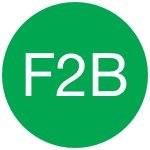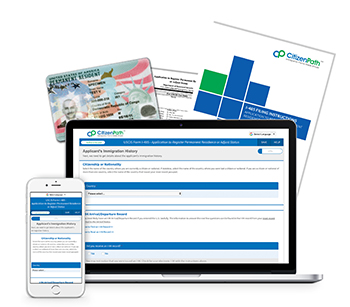How the Visa Bulletin Works
Immediate relatives (spouses, parents and unmarried children under age 21 of U.S. citizens) have an unlimited number of immigrant visas (green cards) available. But most other family-based immigrant visas have a wait. The U.S. Department of State publishes a monthly visa bulletin that lets you know when it’s time to claim your green card. Here's how the visa bulletin works:
U.S. Department of State Visa Bulletin Explained
What is the visa bulletin?
The family-based immigration process starts with a U.S. citizen or permanent resident filing Form I-130, Petition for Alien Relative, on behalf of a foreign family member. Because the number of intending immigrants generally exceeds the available immigrant visas, there is virtually always a wait for family preference categories. In this situation, the Department of State issues immigrant visas (green cards) in a first-come, first-serve manner for each category.
If you are in a family preference category, it’s important to understand that an approved I-130 petition does not mean you may come to the United States. The approved I-130 petition means that USCIS has confirmed you have a qualifying relationship and you’ve established your place in line for a visa. The visa bulletin tells you when the visa is actually available to use.
In fact, it is the priority date that specifies your specific place in line. You have reached the front of the line when your priority date becomes "current." The U.S. Department of State publishes a monthly visa bulletin that lists the priority dates which have become current. In other words, these are the priority dates that now have an immigrant visa available to be claimed. You must review the U.S. Department of State’s visa bulletin to determine if your immigrant petition is current. When an immigrant petition is current, you can apply for a green card.
To read the visa bulletin, you’ll need to know two things:
Determine Your Priority Date
Where do I find my priority date?
The numerical limit for family preference immigrant visas creates a wait list. The beneficiary’s “place in line” is designated with a priority date. The filing date of the I-130 petition becomes the beneficiary's priority date. When USCIS accepts Form I-130, they will also assign a priority date.
Locating your priority date is fairly easy. Review the I-797 Notice of Action (I-130 Receipt Notice) that USCIS mails after they received Form I-130 for processing. Alternatively, you may use the Approval Notice that USCIS sends after approving the petition. The priority date is in the top section of the document. In the example below, a red circle identifies the priority date.

Determine Your Family Preference Category
What are the visa bulletin categories?
Your family preference category is based on your relationship with the petitioner. Different relationships are given different priority for an immigrant visa. If an I-130 petition was filed on your behalf, the petitioner is either a U.S. citizen or permanent resident family member. Determining your family preference category is fairly easy. View the list below to determine your preference category.

Unmarried, adult sons and daughters (age 21 or over) of U.S. citizens

Spouses and unmarried children (under age 21) of permanent residents

Unmarried adult sons and daughters of permanent residents

Married sons and daughters (any age) of U.S. citizens

Brothers and sisters of adult U.S. citizens
If you don't see your relationship type above, you may be an immediate relative. Immediate relatives include the spouse, parent, or unmarried child (under age 21) of U.S. citizens. There is no annual limit on the number of immigrant visas issued to immediate relatives each year. Thus, there is no wait, and they are not included on the visa bulletin. Immediate relatives can move forward with the application.
Read the Visa Bulletin
Which visa bulletin chart do I use?
Once you know your priority date and your preference category, proceed to the U.S. State Department's website to find the monthly visa bulletin. Select the "Current Visa Bulletin." Forward to "Family-Sponsored Preferences" to see a table similar to the sample below. Find your family preference category and compare your priority date to the date listed. If your priority date comes before the date listed, your immigrant visa is current.
Most people can view the column labeled “All Chargeability Areas Except Those Listed.” But if your country of nationality is China, India, Mexico or Philippines, use the respective column for those dates. Now you know how to read the visa bulletin.
A. FINAL ACTION DATES FOR FAMILY-SPONSORED PREFERENCE CASES
The first chart is for “final action dates.” An immigrant visa is actually available if a priority date comes before the date listed in this chart.
Sample Chart for Final Action Dates
| Family-Sponsored | All Chargeability Areas Except Those Listed | CHINA-mainland born | INDIA | MEXICO | PHILIPPINES |
|---|---|---|---|---|---|
| F1 | 01DEC14 | 01DEC14 | 01DEC14 | 15NOV00 | 01MAR12 |
| F2A | C | C | C | C | C |
| F2B | 22SEP15 | 22SEP15 | 22SEP15 | 01JUN01 | 22OCT11 |
| F3 | 22NOV08 | 22NOV08 | 22NOV08 | 01NOV97 | 08JUN02 |
| F4 | 22MAR07 | 22MAR07 | 15SEP05 | 01AUG00 | 22AUG02 |
B. DATES FOR FILING FAMILY-SPONSORED VISA APPLICATIONS
This second chart indicates when the intending immigrant can apply for an immigrant visa. Specifically, the applicant may file an adjustment of status application provided that the applicant’s priority date is before the date listed in the visa bulletin’s filing dates chart. If the intending immigrant will be applying through the consular process, the National Visa Center uses this chart to start the process. (They will notify the intending immigrant when to submit an application for an immigrant visa.)
Sample Chart for Filing Dates
| Family-Sponsored | All Chargeability Areas Except Those Listed | CHINA-mainland born | INDIA | MEXICO | PHILIPPINES |
|---|---|---|---|---|---|
| F1 | 08AUG16 | 08AUG16 | 08AUG16 | 01DEC02 | 22APR15 |
| F2A | C | C | C | C | C |
| F2B | 01JAN17 | 01JAN17 | 01JAN17 | 01JAN02 | 01OCT13 |
| F3 | 08NOV09 | 08NOV09 | 08NOV09 | 15JUN01 | 08NOV03 |
| F4 | 15DEC07 | 15DEC07 | 22FEB06 | 01APR01 | 22APR04 |
When the priority date is current and the I-130 is approved, beneficiaries may generally proceed with the immigrant visa application. Again, individuals in the United States through a lawful entry may be able to adjust status. If eligible, the beneficiary may initiate the application by filing the adjustment of status application package with USCIS. However, any individual outside the United States will need to apply via consular processing. The National Visa Center will contact the beneficiary when they are ready. Learn how to apply.
Visa Bulletin Examples
Do you have examples of how the visa bulletin works?
Visa Retrogression
Why is the visa bulletin not moving?
Sometimes the priority dates on a visa bulletin don't change from the previous month. Worse yet, sometimes the dates can actually move the wrong way. This is called visa retrogression.
Generally, the cut-off dates on the visa bulletin move forward in time. But sometimes they go backwards. Visa retrogression occurs when more people apply for a visa in a particular category or country than there are visas available for that month. Retrogression typically occurs toward the end of the fiscal year as visa issuance approaches the annual category, or per-country limitations. Sometimes a priority date that meets the cut-off date one month will not meet the cut-off date the next month. When the new fiscal year begins on October 1, a new supply of visas is made available and usually, but not always, returns the dates to where they were before retrogression.
Where to Check Visa Bulletin
How do I get monthly updates?
Now that you understand how the visa bulletin works, you'll need to monitor it on a regular basis. The U.S. Department of State publishes a monthly bulletin for employment-based and diversity visa categories as well. Book mark the State Department website below.
Apply for a Green Card
My priority date is current. What's the next step?
If your I-130 petition is now current, you may apply for permanent residence (green card) in the United States. There are two basic ways to apply for your green card: consular processing or adjustment of status.
If you are currently outside the United States, the only path for immigrating to the U.S. is consular processing. Consular processing refers to the process of applying for an immigrant visa (green card) through the U.S. embassy or consular office in a foreign country. Consular processing is the most common path to obtain a green card.
In fact, the National Visa Center will contact the petitioner and beneficiary shortly before the visa becomes available. They'll ask you to submit the immigrant fee, apply for the immigrant visa, submit Form I-864 (Affidavit of Support), and attend a medical exam. Once they obtained these additional documents, the NVC can transfer your case to the U.S. embassy or consulate for an interview.
If you are currently inside the United States, you may be able to adjust status. Adjustment of status is the term used to describe a change from nonimmigrant status to permanent residence (green card holder). U.S. immigration law allows nonimmigrants to adjust status if the individual lawfully entered the U.S. and meets certain requirements.
Only a very limited group of people can adjust status. The most common scenarios include immediate relatives, individuals who entered with a K-1 visa and married a U.S. citizen, asylees, refugees, or those who arrived on an employment visa (e.g. H-1B) and the employer sponsored them for a green card. All green card applicants that don’t qualify for adjustment of status must use the consular processing path.
Your immigrant visa will be available to claim for one year. Immigration and Nationality Act (INA) section 203(g) provides that the Secretary of State shall terminate the registration (petition) of any foreign national who fails to apply for an immigrant visa within one year of notice of visa availability. The Department of State may reinstate the petition if, within two years of notice of visa availability, the foreign national establishes that the failure to apply was for reasons beyond the their control. Therefore, if you do not respond to notices from the NVC within one year, you risk termination of your petition under this section of law and would lose the benefits of that petition, such as your priority date.
Form I-130, Petition for Alien Relative
Use Form I-130 (Petition for Alien Relative) to start the immigration process for a family member. Each year, USCIS rejects or denies thousands of I-130 petitions. Rejections and denials delay the process and can cost you money. Therefore, it's important to get it right.
* Data based on USCIS Forms Data and Lockbox Rejection Data.
How CitizenPath Helps You Prepare the I-130 Petition
How do I prepare Form I-130?
CitizenPath's affordable, online service makes it easy to prepare Form I-130, Petition for Alien Relative. Designed by immigration lawyers, the Immigrant Visa Petition Package helps you eliminate the common errors that create delays, rejections and even denials. That's because the service alerts you when your answer to a question may be a problem. You'll also get customized filing instructions based on your situation. It's a powerful, do-it-yourself tool that puts you in control. And we've got your back -- CitizenPath provides live customer support and provides a money-back guarantee that USCIS will approve the petition. Get started >>
STEP 1 | Check Eligibility | |
We're going to ask you a few questions to make sure you're eligible and preparing the correct form. | ||
STEP 2 | Prepare Form I-130 | |
Our software will guide you through the I-130 petition using simple step-by-step instructions. | ||
STEP 3 | Download, Print and File | |
Once you're completely satisfied, you’ll be able to print your I-130 and customized filing instructions. | ||








